Gold broke above the $1,400 level last week and the volume that corresponded the move was exceptional. The story doesn’t end there. The volume for silver was big and the volume for silver stocks was truly epic. Something very, very, very important is happening right now. You knew a part of the story for weeks now… And the last week seems to have written its conclusive verse.
What is it that you knew about in advance? The reversals!
Did you realize that despite gold’s volatile movement, the white metal has been very … boring?
It’s the final part of June and that’s when long-term triangle-vertex-based reversals were supposed to take place. Based on indications that we had available weeks ago, it seemed more likely that we will see a decline and an interim bottom at this time. However, based on the relatively chaotic political and monetary announcements of the recent past, the precious metals sector moved higher. Silver moved rather insignificantly so, but still, the move was visible, and we can say that they all (gold, silver, and mining stocks) moved higher recently. This means that all triangle-vertex-based reversals should be interpreted as strong indications of a top. Strong, because they confirm each other based on entirely different price patterns.
Let’s take a look below for details.
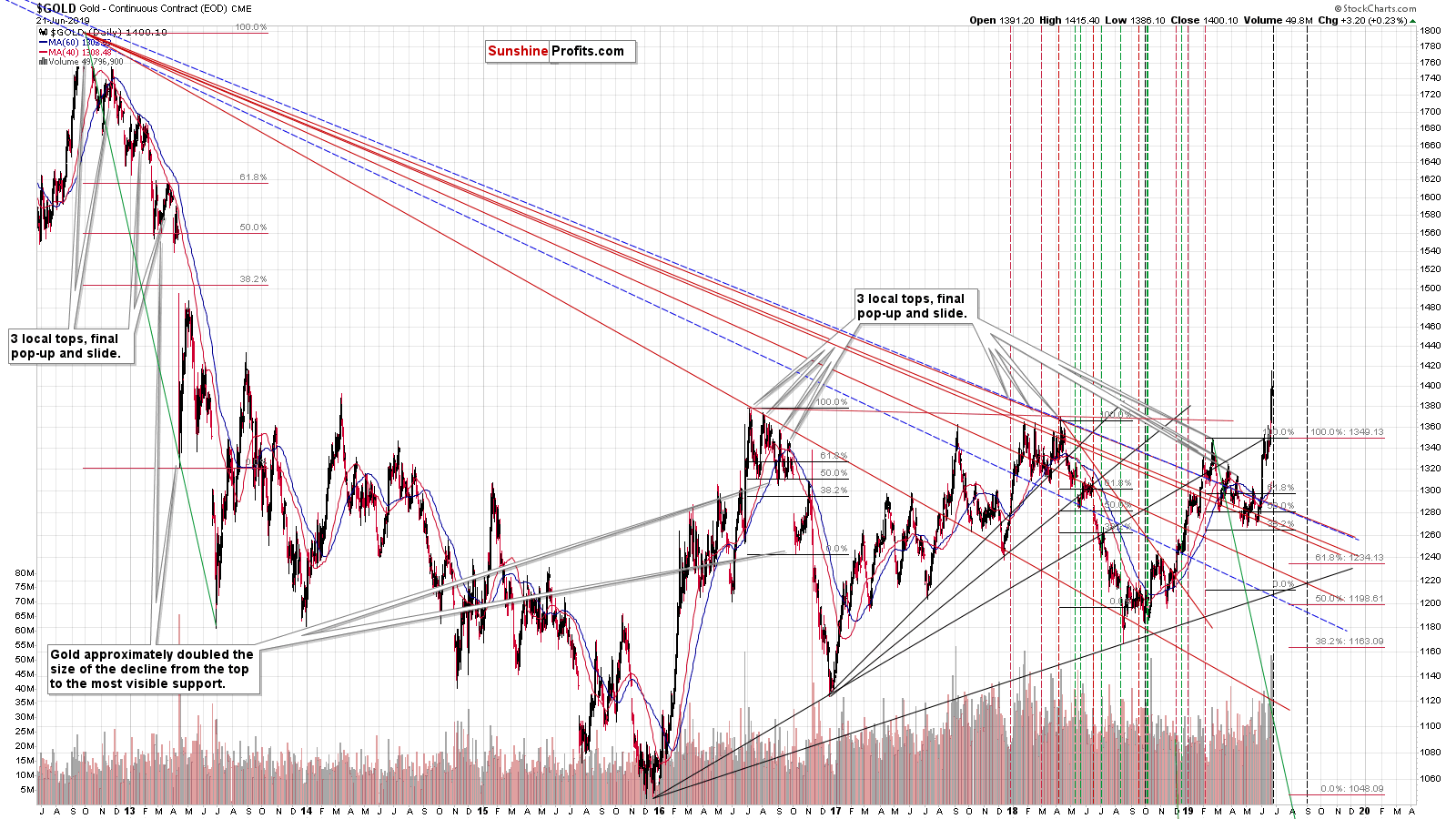
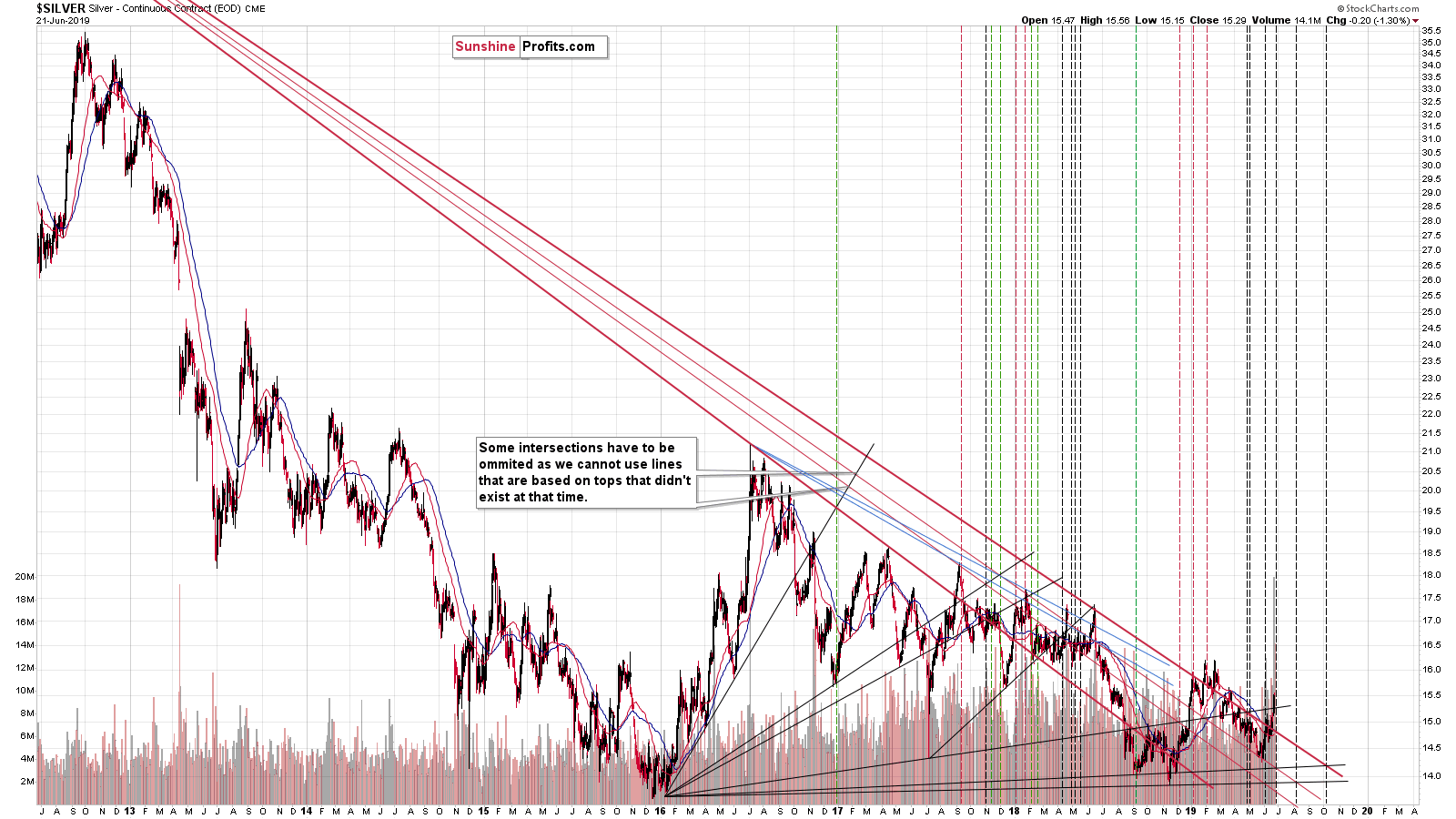
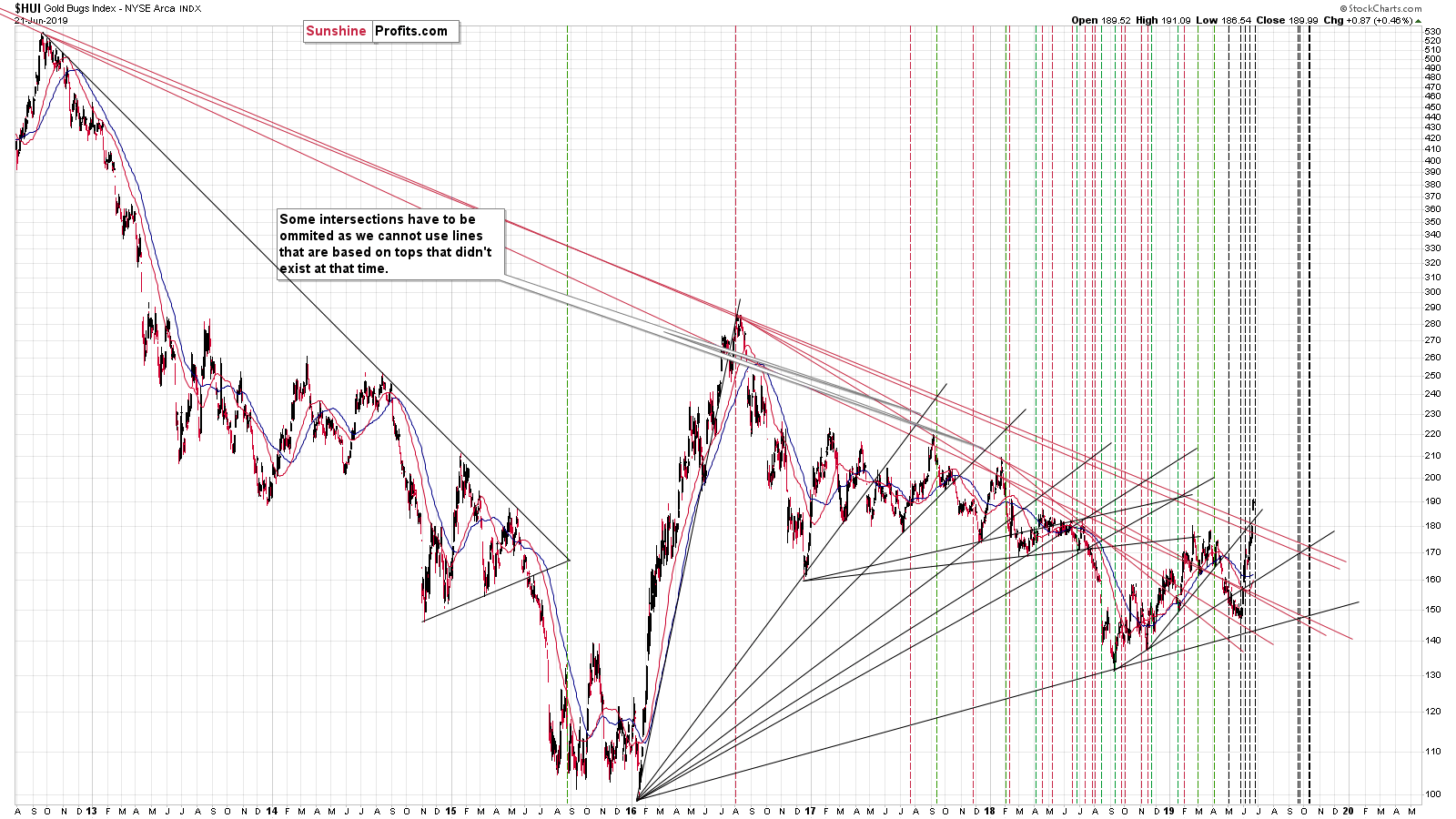
In all cases we see a reversal based on triangles that are created using very long-term support and resistance lines. This is the only reversal that we have can see in the next several months that is confirmed by all 3 above-mentioned markets. This – on its own – is a very good reason not to take gold’s and miners’ recent rally on its face value.
There are quite many additional reasons not to do so, and their big share is based on volume. Extremely high volume usually means extremely high emotions. And what do extremely high emotions accompany? Extreme tops and extreme bottoms. The most recent short-term move has definitely been up, so it can’t be a bottom. This leaves us with the top scenario. As is the case with the above-mentioned reversals, the more confirmations from different markets we get, the more reliable this indication becomes.
And where did we see it?
For instance, in gold where we saw the second-biggest weekly volume reading in case of weekly rallies. The full version of today’s analysis also includes the details regarding senior mining shares, and in this version, we will focus on the silver market.
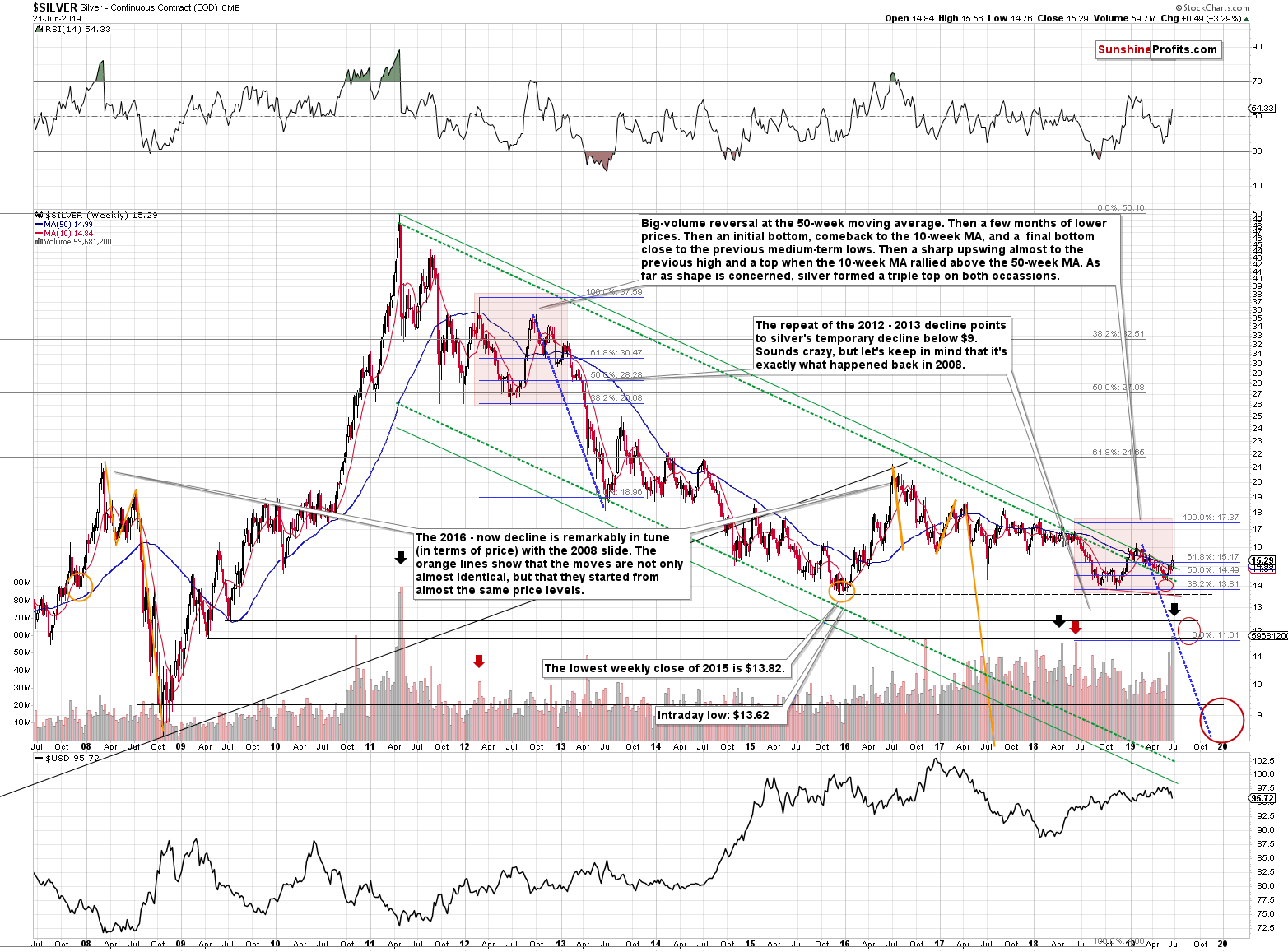
Last week’s volume in silver was also the second biggest when taking the weekly rallies into account. Except for the biggest weekly volume reading (the 2011 top), there was one additional similar weekly volume reading. It was in April 2018, close to silver’s 2018 high. Both times (we marked them with black arrows) were extremely favorable shorting opportunities and one of the worst moments to make silver investments.
There are also red arrows on the above chart that mark the beginning of the silver self-similar pattern that is also marked using the red area on the price chart. The recent rally in gold made the analogy to the 2012-2013 decline rather unclear, but it remains perfectly intact in case of silver, which is not as easily influenced by Twitter politics. What we saw in silver recently, was a relatively small rally when compared to the 2019 decline. That’s very similar to what we saw in early 2013. Both silver moving averages: the 10- and 50-week ones are declining, and this corrective upswing took silver a bit above them. The same thing happened in early 2013. Many people thought that the worst is over, and that silver will keep on rallying from that point. Instead, we have never seen higher silver prices since that time. In fact, the white metals’ price was more than cut in half.
The biggest shocker as far as volume is concerned came from the silver mining stocks.
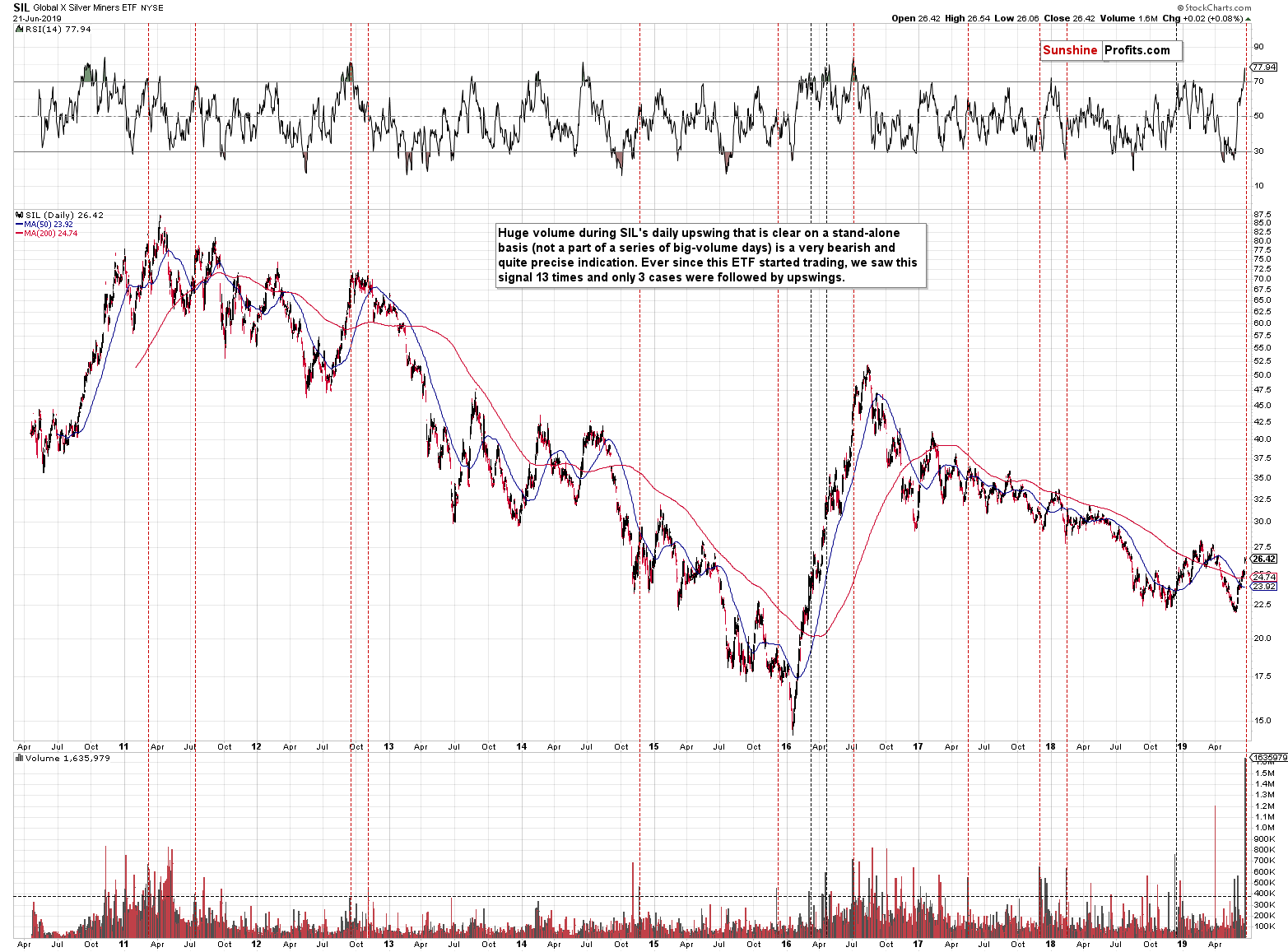
Friday’s SIL (silver stock ETF) volume was truly breathtaking. It was the biggest volume ever and if we take only the daily rallies into account it was more than twice as big as the second biggest value. And what did SIL do on Friday? It moved back and forth, while closing almost unchanged, thus creating a doji candlestick. Doji after a rally and accompanied on huge volume is a sign of reversal. This, accompanied by very overbought status as indicated by the RSI has profoundly bearish implications going forward.
Let’s stay with silver for a while. Did you realize that despite gold’s volatile movement, the white metal has been very… boring?
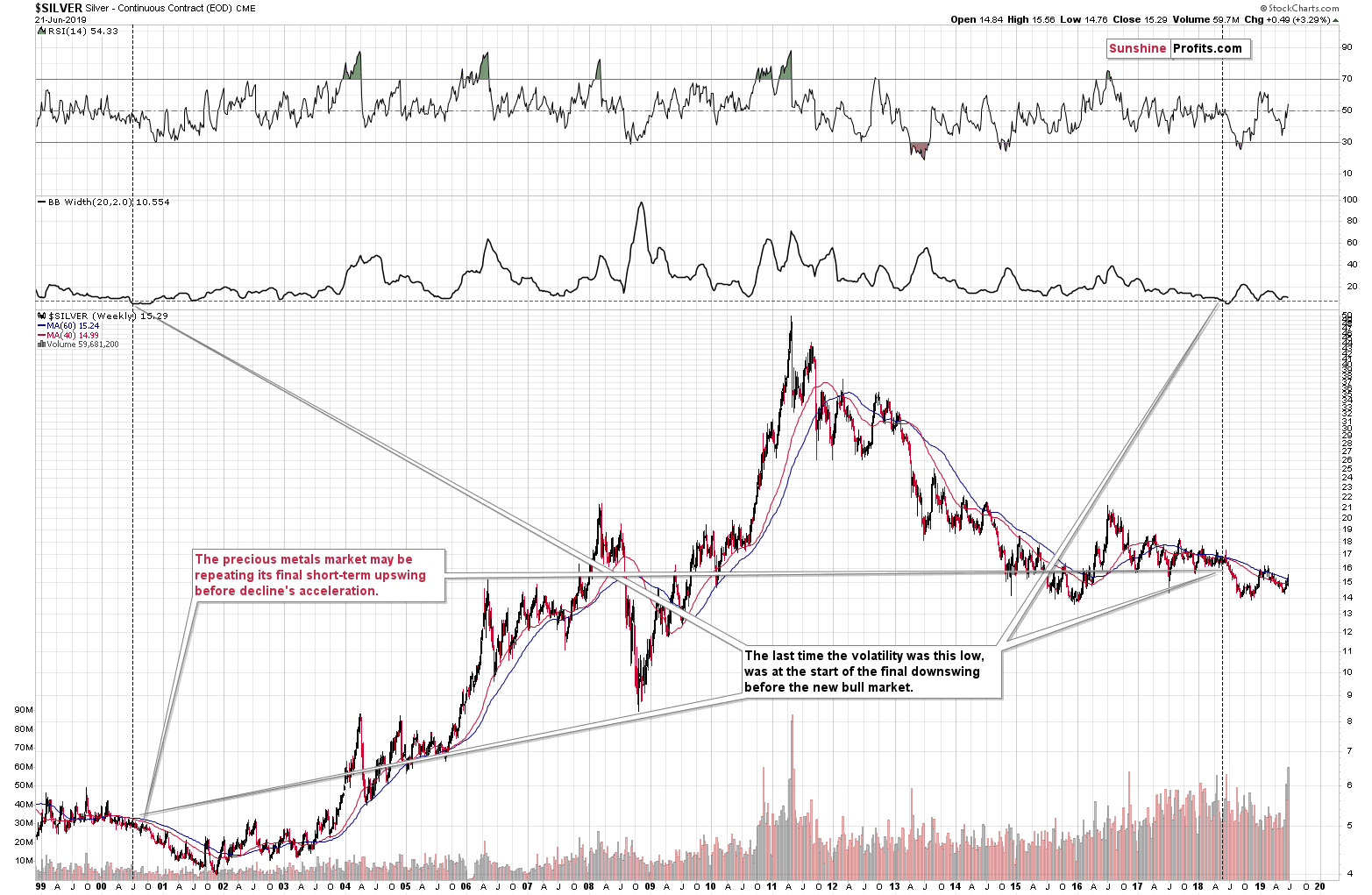
The indicator that is visible on the above chart second from top is the width of the Bollinger Band. It’s a proxy for the market volatility. Please note how the moves in silver (especially upswings) became smaller over time. It came to the point when gold moved above its 2016 high, while silver is relatively close to the 2015 bottom.
The key question is when was silver just as boring (calm) and when did it take place for as long as it’s been taking place right now. The answer is that it was the case about 20 years ago right before silver’s slide to its final bottom. This analogy continues to favor the scenario in which we get lower precious metals values and the true bottom after a several-month-long decline.
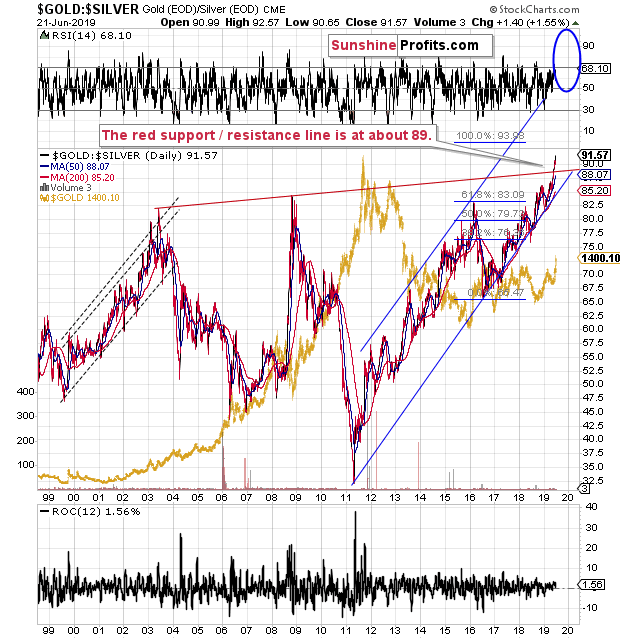
Meanwhile, the gold to silver ratio continues to soar, suggesting that the true bottom for the precious metals sector is not yet in. We have been emphasizing that for weeks, even though multiple gold promoters insisted on ignoring this fact and suggesting that the ratio reached some kind of long-term resistance. It was not only reached – it was breached, and the implications are very bearish, as the biggest moves in the precious metals sector tend to take place in the opposite direction to the one in which this important ratio is moving.
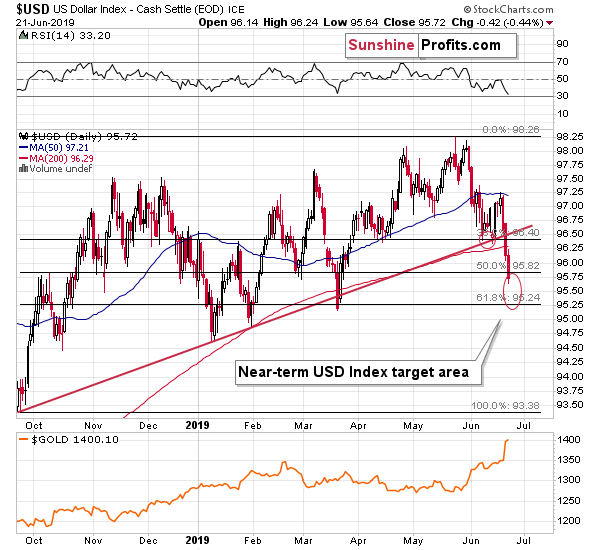
The USD Index bottomed at our first target area and at the moment of writing these words it’s at the current target area. The lower border thereof is created by the March low and the 61.8% Fibonacci retracement based on the entire September – May rally. All the previous medium-term bottoms were higher than the previous one, so it seems likely that the USD will reverse above the March bottom. The above-mentioned retracement is a good candidate as the place where the reversal could take place. Being at 95.24, it’s 0.48 below yesterday’s closing price. At the moment of writing these words, the USD Index is 0.18 lower, so it could decline about 0.3 more today before bottoming. Naturally, that’s not required, and it could rally right away based on its long-term trend.
This USD reversal would probably trigger gold’s reversal and push gold back below the $1,400 level. The invalidation of this move would likely trigger further selling and thus a top would be formed. Given the similarity to both: 1999 and late-2012 bottoms in gold stocks, the following decline is likely to be epic.
Summing up, the gold-silver ratio, silver itself, and many factors that we covered in the full version of today’s analysis all suggest that the most recent move higher in the precious metals sector is nothing more than just a corrective upswing within a bigger trend. It is only gold price itself that can make one wonder if gold has truly broken out and that it will now continue to soar. This is doubtful, because this strength is not confirmed, as it happened right after a series of rather chaotic and surprising news. Adding extremely positive sentiment as confirmed by volume across the precious metals board and the very strong triple vertex-based reversal indication makes the outlook for gold much less bullish that everyone and their brother would have you believe.
Please note that we are not “married” to the bearish outlook for gold and we will return to viewing the medium-term outlook as bullish, but not until the cold analysis suggests that the tables have indeed turned. This is not the case right now – please look at today’s charts for details. In particular, it’s a bad idea to adjust one’s outlook just because many people got excited. The excitation itself is a sign of a turnaround, not something to take at the face value.
(By Przemyslaw Radomski, CFA)
Comments